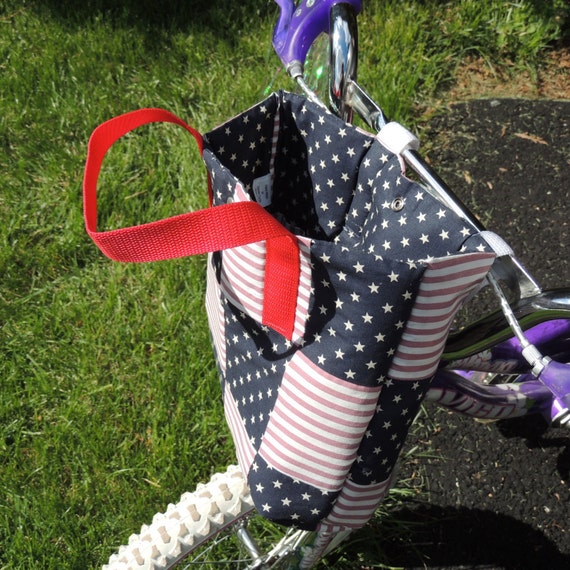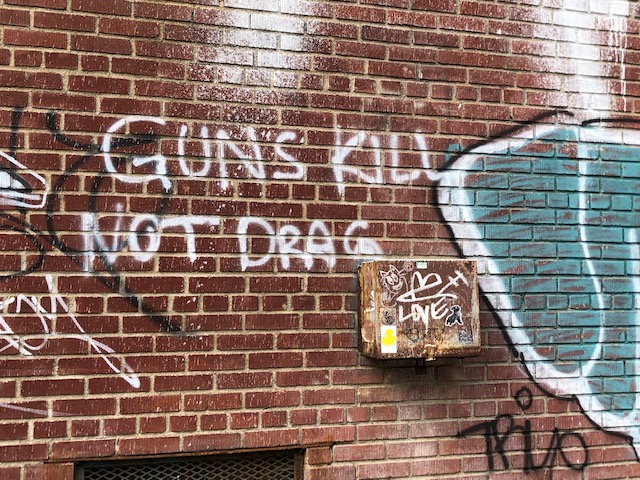If you are here in the US, you know that it is Flag Day.
Even if you aren't here, you've probably seen bikes--or, at least, bike parts and accessories--adorned with the Stars and Stripes. Back in the days when CNC-machined aftermarket parts were all the rage, it seemed that they all had an image of Old Glory painted or emblazoned on them. And one of SRAM's early mountain bike derailleurs was called the Betsy, in honor of the flag's creator:
And most of us, at one time or another, have had bikes, parts or accessories with an image of some flag or another on it. I've owned Italian and French bikes that had little likenesses of their respective country's tricolore on them, and of course I've had handlebar plugs and such with those flags and others on them. Interestingly, I can't find a Union Jack anywhere on my Mercians. And I don't recall seeing a Rising Sun on my Miyata. Oh well.
But there is another kind of flag I associate with bicycles. When I first became a dedicated rider--late in the '70's Bike Boom, one could buy a triangular "safety flag", usually in bright orange, perched atop a plastic pole that attached to the rear axle or some other part of the bike.
I think they may have sold when they were first offered. But I never saw very many of them--and, usually, they were on recumbents, tandems or bike trailers. It's hard to imagine a racer riding with one.
Someone, however, thought they were going to become the hot new bike accessory. At least, that's what I thought when I went to work at American Youth Hostels. Among my responsibilities was buying and inventorying bike equipment in the outdoor shop and mail-order service AYH ran from its headquarters, then located on Spring Street, near Sullivan Street. Mostly, we sold panniers, handlebar bags and other bike luggage, racks, a few accessories (like pumps and fenders) and some commonly-replaced parts such as tires, tubes, chains, brake pads and cables. We had a few components--mainly SunTour derailleurs and freewheels, which people often bought to replace their sick or broken Simplexes or Hurets, as well as a few high-end pieces such as SunTour Superbe brakes and Sugino triple cranksets.
Among the stock of bicycle equipment were boxes full of bike safety flags. Turns out, there were about 1000 of those pennants, all told, all of them in the same corners of the store and stockroom where they'd been residing since the day they were delivered, nearly a decade earlier.
"Can you think of a way to sell them?" That was one of the first questions David Reenburd, the manager, asked me.
"Sell them?". I could just barely suppress a chuckle--and the impulse to say that my degree was in liberal arts, not marketing.
He explained that his boss wanted them sold. Everyone else wanted to simply get rid of them, as they were taking up space.
"Why don't we just give them away?", I wondered.
"He", meaning his boss, "said to sell."
"Did he say for how much?"
I noticed that they had price tags of $7.95: what they would have sold for (if indeed they had sold) a decade earlier. David agreed we'd never get a price like that, but his boss wanted to get "as much as we can" for them.
"How about if we sell them for $1.00 with the purchase of anything else in the store?"
His eyes lit up. And I thought that sooner or later they'd be running up the flag for me.
One week later, we had no takers. So I came up with an idea that couldn't be carried out today.
In those days, bar codes for store merchandise weren't yet in use. At least, they weren't in the AYH store. So we entered the prices of items by hand in the register. I realized that I could enter, say, a handlebar bag that cost $29.95 at $28.95 and enter $1.00 for the flag. Then, if the customer questioned it, I could say that I "mistakenly" entered the wrong price and simply added the difference. And they could take one of the flags.
A couple of days later, we still had no takers for the flags. Even when I tried giving them to customers as "gifts" with their purchases, nobody wanted them.
We even offered them to riders on the Five Boro Bike Tour--which, in those days, AYH sponsored. Still no takers. Perhaps I was hallucinating (from what, I don't know), but those orange safety flags were starting to look more like white "surrender" flags.
A few months later, AYH moved its facilites up the street, to a building on the corner of Crosby and Spring that today houses a Sur La Table store. The boxes of flags got "lost" somewhere along the way!
Did they send up a distress signal? If they did, we never got it.



.jpg)
.jpg)

.jpg)


















